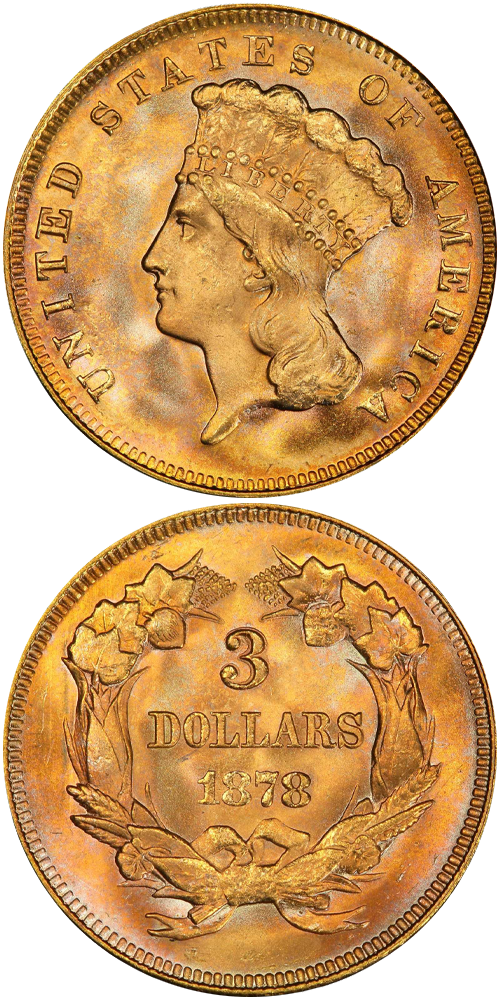1878 Gold Three Dollar
Introduced in 1854 to coincide with the change in the first-class postal rate to 3¢, the three-dollar gold piece was intended to make the purchase of a full sheet of 100 stamps easier. However, the new gold coin never took off for everyday use and for most of its existence, mintage figures were modest with only ten of the 43 total issues exceeding 10,000 pieces, almost all in the 1850s. In 1878, the Philadelphia Mint struck 82,304 three-dollar gold pieces, second only to the initial 1854 in terms of number coined. As the denomination was seldom seen in circulation in the East, many of the coins sat in Treasury coffers until they were eventually melted. Minimal quantities were struck each year at Philadelphia for another eleven years before the denomination was abolished in 1889. In the meantime, some banks paid out their reserves of the denomination at a slight premium to numismatists as well as jewelers who used the coins in necklaces and bracelets.
During and after the Civil War, coins, especially those made in gold and silver, continued to be hoarded. The passage of the Specie Resumption Act of January 14, 1875 mandated that the Treasury Department redeem federally-issued currency for specie (gold or silver) beginning on January 1, 1879. Leading up to the resumption of these payments, the Mint struck large quantities of gold coins of all denominations in anticipation of increased demand for commerce. Once paper money achieved parity with gold in December 1878, the expected greater demand for coins did not materialize, especially for the three-dollar gold piece.
The example to the left was sold by Stack's Bowers Galleries in the August 2020 Las Vegas Auction, where it realized $55,200.






